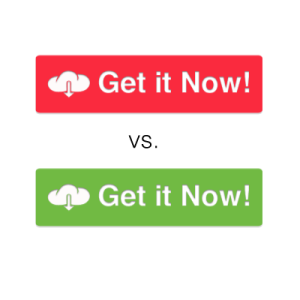 In the world of web design everyone has their favorite button color that they believe is the best for conversion. You will often hear that red is the be-all-end-all color of choice for calls to action. There is some pretty good evidence to support this theory.
In the world of web design everyone has their favorite button color that they believe is the best for conversion. You will often hear that red is the be-all-end-all color of choice for calls to action. There is some pretty good evidence to support this theory.
Hubspot ran a test on their site comparing two almost identical landing page. The only difference in the landing pages was the hex color of the “Get Started New!” button. One button they set to green and the other to red. The results of the test showed that the red button outperformed the green button by 20%!
Dan McGrady at dmix conduced a similar experiment with one of his websites. Since the website is a side project, he only tweaks the sales pages every now and then to see what can improve the conversion rate. When he applied the green and red button test, he was floored by the results. Just like the Hubspot test, he saw an increase in the number of conversions. By just switching the color from green to red, Dan saw a conversion increase of 72%.
So should we all run out and start turning our buttons red?
The short answer is maybe. What these test show is that buttons that stick out from the rest of a website’s design are the buttons that are going to convert the best. If there is a red themed website with a bunch of red buttons all over the place, they’re most likely not going great conversion rates.
It is tempting to be a brand purist and fill your site with buttons that flow with you brand. This data shows that this strategy may be hurting you. It also shows something else.
There is such a thing as over calling action. Calls to action that lead to landing pages that convert visitors to leads and customers are great, but only in proportion. Calls to action should be easy to spot so that website skimmers have a chance to see the offer. It should also deliver a clear message about what action they should take next and why they should take that action.
At the end of the day, each website is unique. It is important to test the difference between color, copy, font, and placement of calls to action. Let the data do the talking!
